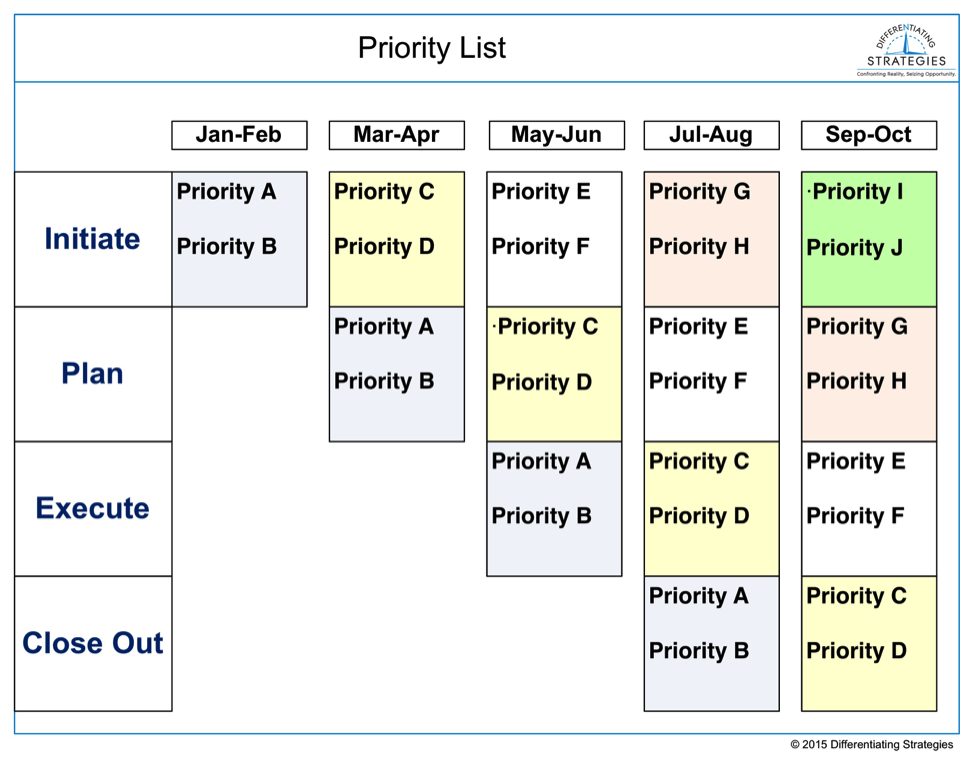How many times have you told your team to prioritize? How often is the response an excited and engaged energy that convinces you the team is grateful for that direction? How often do the outcomes match your expectations?
What is the problem with prioritizing that makes it so hard?
Prioritization is not just putting things in order. Changing the order of deliverables on a person’s (or team’s) list does not help a team get more done. In fact if some of the work in progress gets moved down the list, that work may need to be repeated when that item moves up to where it gets actions again. Resources needed to be reallocated. The change in direction needs to be communicated and participants need to be able to arrive at a shared understanding what is expected.
Adding items to a list while reordering sequence only makes things more festive for participants. In many cases the additional items may not have an accompanying infusion of resources. Are people being asked to do more with less?
In some cases a head nod is given to resources. “Tap into some of the folks from Linda’s team.” OK, but does Linda know that? Does Linda have people sitting around waiting for assignment or does she now have to do more with less?
Nothing stays the same. Change is always happening. Leaders will find the need to change priorities.
What is the evidence that priority has been assigned? If we want to see what the priorities are follow the resources. What are the time, talent and financial resources devoted to? Declaring something a priority without allocating resources taxes credibility. In looking at the deliverables to be accomplished how much can be included before resources are fully allocated. Keep in mind the more deliverables that are being undertaken, the more resources that will be consumed coordinating between deliverables. Coordination is needed but does not contribute directly to outcomes.
Another way to tell if priority has changed is to ask what is not going to be worked on. If nothing came off the list, then we just made things more complex while likely diluting focus.
One approach to simplifying prioritizing is to add some dimensions. First consider that deliverables go through a series of stages in their execution. Efforts are initiated, planned, executed and closed out. So one dimension is what stage of execution the item is in. Resources like the Project Management Institute’s Project Management Body of Knowledge (PMBOK) can help define that structure. Then also consider time as a dimension.
Using the dimensions of time and stage of execution the priorities can be ordered in a way that focus can be placed on each priority in order. What was once a list becomes a portfolio to be managed. Part of the execution process can be arriving at defined way points that mark progress from one stage of execution to another. Periodic reviews can track progress and move the items through the stages. Resource managers can be consulted to determine how much work can be undertaken for any given stage within a given timeframe. This may change depending on the scope of an individual item.
Leaders can move from rearranging a list to managing a portfolio. Since each phase may require different kinds of resources when one resource pool is saturated with work the team can move to projects in a different stage. As an example, if execution resources are tied up the team can work on the items in the initiation or planning stage.
So what are you going to do with your list? Are you going to make changing the way you prioritize a priority?
Joe Thompson
© 2016 Differentiating Strategies, LLC


